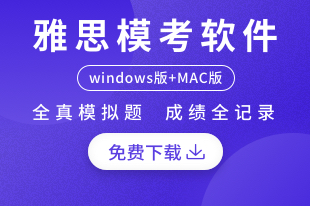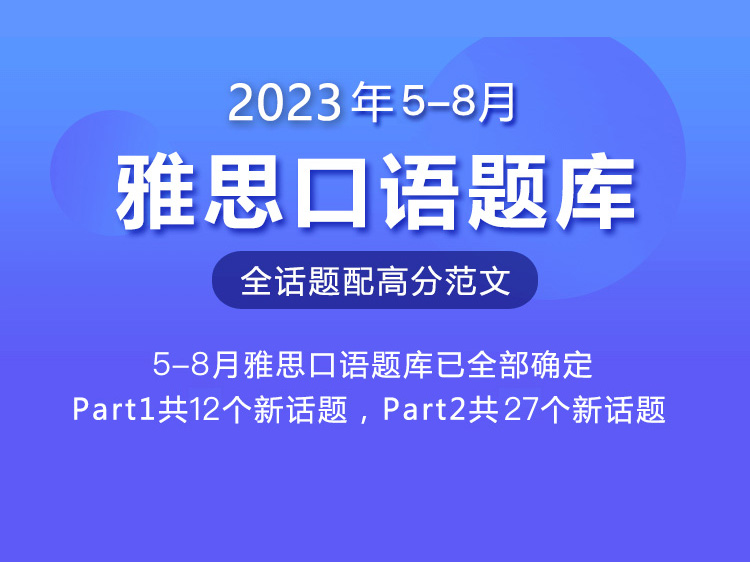【小站出品】雅思阅读机经真题解析-纸张和电脑
- 2016年11月25日15:44 来源:小站教育作者:小站雅思编辑
- 参与(7) 阅读(39966)
小站独家,雅思阅读机经真题解析。一切患有雅思阅读刷题强迫症的烤鸭,请看这里。小站精心整理了一批雅思阅读机经真题。如果你的剑桥雅思阅读已是烂熟于心,那么这一系列的雅思阅读机经真题真的很适合你,搭配上绝对原创的讲解,还有全文的中文翻译,这等阅读大餐,还等什么!
Paper or Computer?
A Computer technology was supposed to replace paper. But that hasn't happened. Every country in the Western world uses more paper today, on a per-capita basis, than it did ten years ago. The consumption of uncoated free-sheet paper, for instance — the most common kind of office paper — rose almost fifteen per cent in the United States between 1995 and 2000 This is generally taken as evidence of how hard it is to eradicate old, wasteful habits and of how stubbornly resistant we are to the efficiencies offered by computerization. A number of cognitive psychologists and ergonomics experts, however, don't agree Paper has persisted, they argue, for very good reasons: when it comes to performing certain kinds of cognitive tasks, paper has many advantages over computers The dismay people feel at the sight of a messy desk — or the spectacle of air-traffic controllers tracking fj through notes scribbled on paper strips — arises from a fundamental confusion about the role that paper plays in our lives.
B The case for paper is mode most eloquently in "The Myth of the Paperless Office", by two social scientists. Abigail Sellen and Richard Harper. They begin their book with an account of a study they conducted at the International Monetary Fund, in Washington. D.C. economists at the I.M.F. spend most of their time writing reports on complicated economic questions, work that would seem to be perfectly suited to sitting in front of a computer. Nonetheless, the I.M.F. is awash in paper, and Sellen and Harper wanted to find out why. Their answer is that the business of reports — at least at the I M F. — is an intensely collaborative process, the professional judgments and contributions of many people. The economists bring drafts of reports to conference rooms, spread out the relevant pages, and negotiate changes with one other. They go back to their offices and jot down comments in the margin, taking advantage of the freedom offered by the informality of the handwritten note. Then they deliver the annotated draft to the author in person, taking him, page by page, through the suggested changes. At the end of the process, the author spreads out all the pages with comments on his desk and starts to enter them on the computer — moving the pages around as he works, organizing and reorganizing, saving and discarding.
C Without paper, this kind of collaborative and iterative work process would be much more difficult. According to Sellen and Harper, paper has a unique set of "affordances" — that is, qualities that permit specific kinds of uses. Paper is tangible: we can pick up a document, flip through it, read little bits here and there, and quickly get a sense of it. Paper is spatially flexible, meaning that we can spread it out and arrange it in the way that suits us best. And it's tailorable: we can easily annotate it, and scribble on it as we read, without altering the original text. Digital documents, of course, have their own affordances. They can be easily searched, shared, stored, remotely, and linked to other relevant material. But they lack the affordances that really matter to a group of people working together on a report. Sellen and Harper write:
D Paper enables a certain kind of thinking. Picture, for instance, the top of your desk. Chances are that you have a keyboard and a computer screen off to one side, and a clear space roughly eighteen inches square in front of your chair. What covers the rest of the desktop is probably piles — piles of papers, journals, magazines, binders, postcards, videotapes, and all the other artifacts of the knowledge economy. The piles look like o mess, but they aren't. When a group at Apple Computer studied piling behavior several years ago, they found that even the most disorderly piles usually make perfect sense to the piles, and that office workers could hold forth in great detail about the precise history and meaning of their piles. The pile closest to the cleared, eighteen-inch-square working area, for example, generally represents the most business, and within that pile the most important document of all is likely to be at the top. Piles are living, breathing archives. Over time, they get broken down and resorted, sometimes chronologically and sometimes thematically and sometimes chronologically and thematically; clues about certain documents may be physically embedded in the file by, say, stacking a certain piece of paper at an angle or inserting dividers into the stack.
E But why do we pile documents instead of filing them? Because piles represent the process of active, ongoing thinking. The psychologist Alison Kidd, whose research Sellen and Harper refer to extensively, argues that "knowledge workers" use the physical space of the desktop to hold "ideas which they cannot yet categorize or even decide how they might use" The messy desk is not necessarily a sign of disorganization. It may be a sign of complexity: those who deal with many unresolved ideas simultaneously cannot sort and file the papers on their desks, because they haven't yet sorted and filed the ideas in their head. Kidd writes that many of the people she talked to use the papers on their desks as contextual cues to "recover a complex set of threads without difficulty and delay" when they come in on a Monday morning, or after their work has been interrupted by a phone call. What we see when we look at the piles on our desks is, in a sense, the contents of our brains.
F This idea that paper facilitates a highly specialized cognitive and social process is a far cry from the way we have historically thought about the stuff. Paper first began to proliferate in the workplace in the late nineteenth century as part of the move toward "systematic management." To cope with the complexity of the industrial economy, managers were instituting company-wide policies and demanding monthly, weekly, or even daily updates from their subordinates. Thus was born the monthly sales report, and the office manual and the internal company newsletter. The typewriter took off in the eighteen-eighties, making it possible to create documents in a fraction of the time it had previously taken, and that was followed closely by the advent of carbon paper, which meant that a typist could create ten copies of that document simultaneously. Paper was important not to facilitate creative collaboration and thought but as an instrument of control.
Questions 27-32
The reading passage has seven paragraphs, A-G
Choose the correct heading for paragraphs A-G from the list below.
Write the correct number, i-x. in boxes 27-32 on your answer sheet.
List of Headings
i. paper continued as a sharing or managing must
ii. piles can be more inspiring rather than disorgansing
iii. Favorable situation that economists used paper pages
iv. overview of an unexpected situation: paper survived
v. comparison between efficiencies for using paper and using computer
vi. IMF' paperless office seemed to be a waste of papers
vii. example of failure for avoidance of paper record
viii. There are advantages of using a paper in offices
ix. piles reflect certain characteristics in people' s thought
x. joy of having the paper square in front of computer
1. Paragraph A
2. Paragraph B
3. Paragraph C
4. Paragraph D
5. Paragraph E
6. Paragraph G
Questions 33-36 Summary
Complete the following summary of the paragraphs of Reading Passage, using no more than three words from the Reading Passage for each answer. Write your answers in boxes 33-36 on your answer sheet.
Compared with digital documents, paper has several advantages. First it allows clerks to work in a____33____way among colleagues. Next, paper is not like virtual digital versions, it's____34____. Finally, because it is____35____note or comments can be effortlessly added as related information. However, shortcoming comes at the absence of convenience on task which is for a____36____.
Question 37-40
Choose the correct letter, A, B, C or D
Write your answer in boxes 37-40 on your answer sheet.
37 What do the economists from IMF say that their way of writing documents?
A they note down their comments for freedom on the drafts
B they finish all writing individually
C they share ideas on before electronic version was made
D they use electronic version fully
38 What is the implication of the "Piles" mentioned in the passage?
A they have underlying orders
B they are necessarily a mess
C they are in time sequence order
D they are in alphabetic order
39 What does the manager believe in sophisticated economy?
A recorded paper can be as management tool
B carbon paper should be compulsory
C Teamwork is the most important
D monthly report is the best way
40 According to the end of this passage, what is the reason why paper is not replaced by electronic vision?
A paper is inexpensive to buy
B it contributed to management theories in western countries
C people need time for changing their old habit
D it is collaborative and functional for tasks implement and management
文章题目:纸张还是电脑?
篇章结构
|
体裁 |
论说文 |
|
题目 |
纸张还是电脑? |
|
结构 |
A:总述纸张仍然存在,并且没有被电脑代替的事实 B: 经济学家运用纸张的这种现状 C: 在办公室使用纸张的一些好处 D:堆积会更启发灵感而不是杂乱 E:堆积会反映人们思考的特点 F:纸张继续作为分享和管理的必不可少的物质 |
试题分析
Question 1-。。。
题目类型:
|
题号 |
定位词 |
文中对应点 |
题目解析 |
|
27 |
Computer replace Paper |
A段前两句 |
A段前两句说纸张没有被电脑科技代替, 后几句接着说了现在纸张用的量还在增加 ,并且说明了为什么纸张存在的合理性。所以只有iv. overview of an unexpected situation—paper survived.这一选项概括了A段的意思。 |
|
28 |
IMF. Is awash in paper |
B段第三句 |
B段首先讲了两个社会学家的无纸化办公的理论,但是从第三句开始一直在讲在国际货币基金组织里面纸张被使用的现状,所以对应iii选项. |
|
29 |
Affordance Tangible tailorable |
C段第二三四句开头 |
C段开头说如果没有纸张,写作变得困难,然后继续说纸张有很多功能可见性比如纸张是有形的,纸张可以修改。所以对应选项viii. |
|
30 |
Piles aren’t mess
|
D段第三句 |
D段第三句说堆积不是杂乱,后几句说的是研究表明看似杂乱的堆积其实是有规律的。对应选项ii. |
|
31 |
Piles represent active |
E段前两句 |
E段第一句先提出问题,为什么将文件摞起来而不是归档?然后第二句回答说摞放表示动态的思考过程 所以选ix. |
|
32 |
Important instrument Control |
F段尾句 |
F段最后总结说,纸张不是在创造性的集体写作方面重要,而是在作为控制手段时显得格外重要。所以对应选项i. |
|
33 |
Advantage way colleagues |
C段首句 |
根据advantage我们知道这是在讲第三段的内容,根据way 和colleague 可知要选的是描述纸张是什么样的方式来在工作中起作用。所以是collaborative和iterative。 |
|
34 |
not like digital version |
C段第三句 |
这个空是和digital version的比较,第三句说pick Up 和flip都是比较,所以是tangible可见的。 |
|
35 |
added |
C段第五句 |
Annotate和scribble都对应 Note and comment Added,所以是tailorable 。 |
|
36 |
Shortcoming |
C段最后一句 |
对应C段最后一句 说到了缺点 并且题中还有一个a ,所以应该是 group of people。 |
|
37 |
Economist Writing Documents |
B 段最后一句 |
根据 IMF和economists定位到第二段,正确选项是对应到最后一句话At the end of the process,…start to enter them on computer…所以对应C选项。A选项说note for freedom与原文有出入,B的finish individually与段落的第四句意思相反,文中说的是这个过程是合作的。D选项的use electronic version fully 显然和文中相反,文中说到也用纸张。 |
|
38 |
Piles |
D段第5、6句 |
文中说堆积看起来很乱,其实不然,通过研究表明,即使最乱的堆积也有摆放者自己的思路。所以对应A选型,underlying order 潜在的顺序 |
|
39 |
Manager sophisticated Economy |
F段第三句 |
根据manager和economy定位到F段第三句,说的是经理制定了全公司范围的制度,并且要求按时汇报工作进程。所以对应A选项。
|
|
40 |
Reason paper Not replaced |
F段最后一句 |
F段最后一句提到了paper is important…所以就是答案,说到了纸张作为控制手段的重要性,对应D选项。 |
参考答案:
|
Version 23325 主题 纸张和电脑 |
|||||
|
27 |
iv |
28 |
iii |
29 |
viii |
|
30 |
ii |
31 |
ix |
32 |
i |
|
33 |
collaborative and iterative |
34 |
tangible |
35 |
tailorable |
|
36 |
group of people |
37 |
C |
38 |
A |
|
39 |
A |
40 |
D |
|
|











































